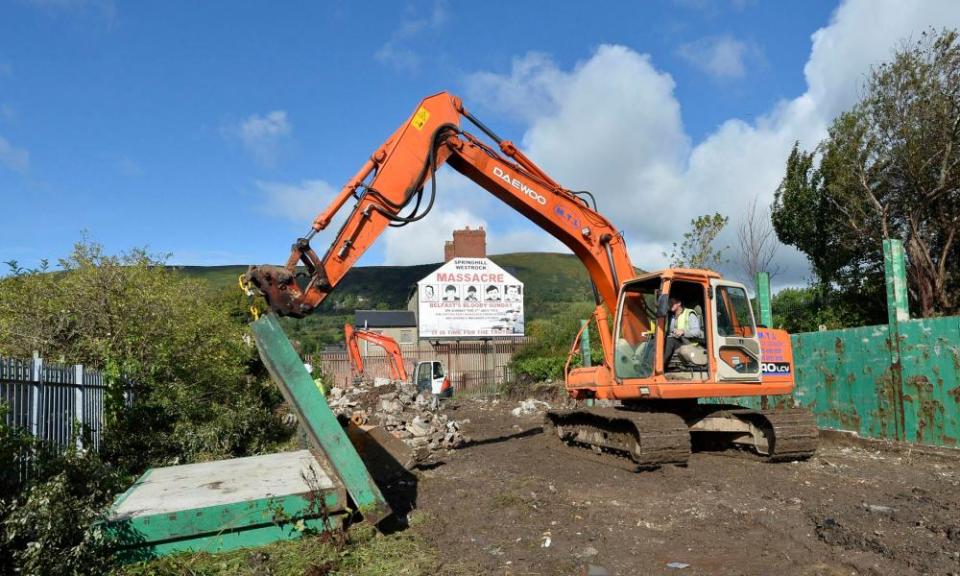Belfast 'peace wall' between communities felled after 30 years

Another of Belfast’s so-called peace walls separating Catholic and Protestant communities is being dismantled as part of a programme to eliminate barriers that divide the city into rival sectarian zones.
The three-metre-high wall cutting off Springfield Road from Springfield Avenue in west Belfast is being taken down on Wednesday after almost 30 years.
It was erected in 1989 to protect residents on either side from sectarian attacks as well as to protect a local police station.
Local communities on both sides of the divide had to agree to the destruction of the concrete wall before work started to knock it down.
There are still 108 “peace walls” or security barriers dotted across Northern Ireland, with the majority situated in working-class districts of north and west Belfast. Communities on either side of the barriers generally, if reluctantly, support their presence because it makes them feel safer from sectarian attack and rioting.
Community groups on both sides of the barrier coming down welcomed its removal.
Seamus Corr, project coordinator for the Black Mountain Shared Spaces Project, said: “The removal of the Springhill Avenue barrier is a significant step forward for the local community.
“This is about more than just changing the physical look of this area. It shows that communities are willing, with support, to work towards positive change.
“The removal of a wall is not a starting point nor an end point, but a significant milestone on the journey towards a positive future.”
The removal of this particular wall had the financial backing of the International Fund for Ireland’s peace walls programme.
Its chairman, Dr Adrian Johnston, said on Wednesday: “The communities’ decision to remove the wall at Springhill Avenue and the alterations that are taking place illustrate what can be achieved with strong local leadership and by fully engaging those who live next to physical barriers.”
The first “peace wall” to come down since they were first erected from 1969 onwards was on Belfast’s Crumlin Road last year. This was a highly significant moment, given that the wall was situated in one of the most dangerous sectarian faultlines in north Belfast, an area where almost a third of all the deaths in the Northern Ireland Troubles occurred.

 Yahoo News
Yahoo News 